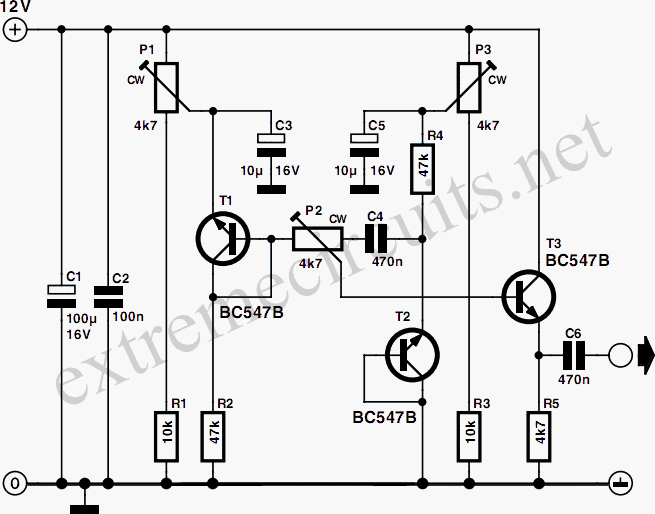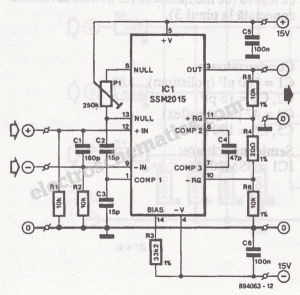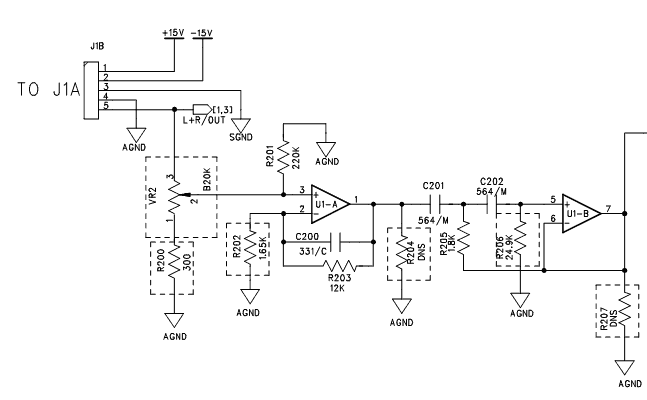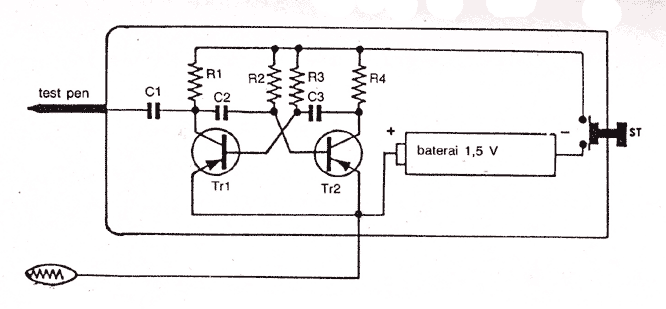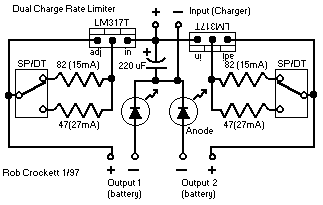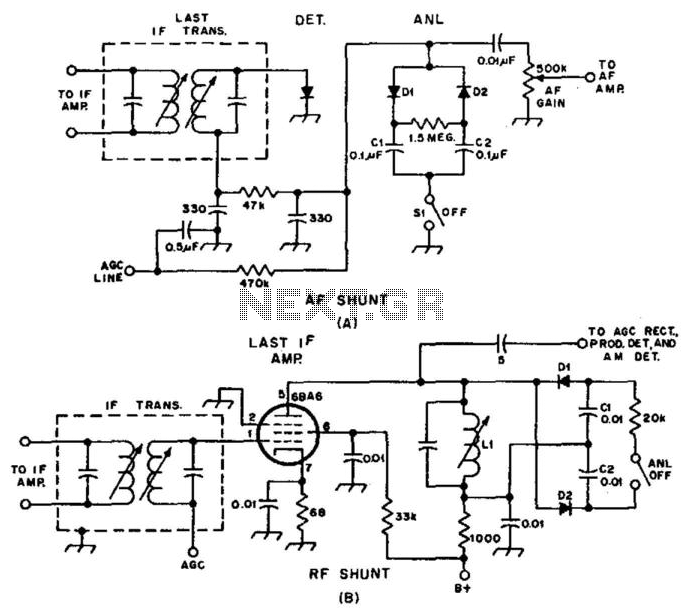
Noise limiter
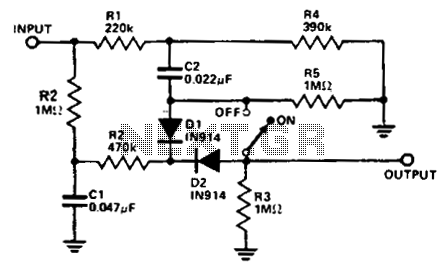
This limiter enhances the signal-to-noise ratio. It connects between the detector output and the audio input (if high impedance) or at a relatively high-impedance section between two audio stages, preferably in the low-level stages. Diodes D1 and D2 can be any type of diode with relatively low forward resistance and very high reverse resistance. The circuit is particularly effective for receivers with bandwidths down to 2 or 3 kHz. To accommodate receivers with narrower bandwidths, it is advisable to increase the value of C1.
The limiter circuit operates by controlling the amplitude of the signal passing through it, effectively reducing the noise level while preserving the integrity of the desired audio signals. The placement of the limiter is crucial; it should be positioned between the output of the detector and the input of the audio stage to ensure optimal performance. The high-impedance nature of the connection helps to prevent loading effects that could distort the audio signal.
In this configuration, diodes D1 and D2 play a significant role. Their low forward resistance allows them to conduct when the signal exceeds a certain threshold, effectively clamping the signal to prevent it from exceeding this limit. The high reverse resistance ensures that the diodes do not conduct during negative cycles of the audio signal, thereby maintaining the integrity of the audio waveform.
The choice of capacitor C1 is also critical. Increasing its value will allow the circuit to function effectively with receivers that have narrower bandwidths, which typically require better signal conditioning to minimize distortion and maintain clarity. The overall design of this limiter circuit is tailored to enhance the performance of audio receivers, particularly in environments where signal-to-noise ratios are a concern, ensuring that the output maintains a high level of fidelity despite the presence of noise.This limiter improves signal-to-noise ratio. It is connected between the detector output and the audio input (if high impedance) or at some relatively high-impedance section between two audio stages—preferably the low level stages.D1 and D2 can be any diode having relatively low forward resistance and very high back resistance. The circuit is excellent for receivers having bandwidths down to 2 or 3 kHz. Increase the value of Cl for receivers having narrower bandwidths. 🔗 External reference
The limiter circuit operates by controlling the amplitude of the signal passing through it, effectively reducing the noise level while preserving the integrity of the desired audio signals. The placement of the limiter is crucial; it should be positioned between the output of the detector and the input of the audio stage to ensure optimal performance. The high-impedance nature of the connection helps to prevent loading effects that could distort the audio signal.
In this configuration, diodes D1 and D2 play a significant role. Their low forward resistance allows them to conduct when the signal exceeds a certain threshold, effectively clamping the signal to prevent it from exceeding this limit. The high reverse resistance ensures that the diodes do not conduct during negative cycles of the audio signal, thereby maintaining the integrity of the audio waveform.
The choice of capacitor C1 is also critical. Increasing its value will allow the circuit to function effectively with receivers that have narrower bandwidths, which typically require better signal conditioning to minimize distortion and maintain clarity. The overall design of this limiter circuit is tailored to enhance the performance of audio receivers, particularly in environments where signal-to-noise ratios are a concern, ensuring that the output maintains a high level of fidelity despite the presence of noise.This limiter improves signal-to-noise ratio. It is connected between the detector output and the audio input (if high impedance) or at some relatively high-impedance section between two audio stages—preferably the low level stages.D1 and D2 can be any diode having relatively low forward resistance and very high back resistance. The circuit is excellent for receivers having bandwidths down to 2 or 3 kHz. Increase the value of Cl for receivers having narrower bandwidths. 🔗 External reference
